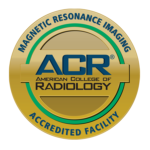ULTRASOUND
Ultrasound imaging, also called ultrasound scanning or sonography, is a safe, painless examination that uses sound waves to capture images of the inside of the body and show the size, shape, consistency and position of internal organs and soft tissue. Because ultrasound images are captured in real-time, they may be used to study the structure and movement of the body’s internal organs, as well as blood flowing through the blood vessels.
Ultrasound imaging involves the use of a small transducer (probe) and ultrasound gel placed directly on the skin. High-frequency sound waves are transmitted from the probe, through the gel and into the body. These sound waves bounce back, or echo, off the internal structures and organs. A computer then converts them into moving images that are displayed on a monitor.
Ultrasound procedures are frequently performed during pregnancy but are also useful in the examination of most internal organs. Our sub-specialized radiologists use ultrasound technology to detect, diagnose or treat problems with the:
- Heart
- Thyroid
- Blood vessels
- Uterus and ovaries
- Fetus (unborn child)
- Liver
- Gallbladder
- Spleen
- Pancreas
- Kidneys
- Bladder
- Testicles
Additionally, ultrasound can be used to guide biopsies and the insertion of peripherally inserted central catheter (PICC) lines, as well as to examine blood vessels such as the carotid arteries for plaque buildup and the leg veins for blood clots.
BEFORE ARRIVING FOR YOUR EXAM
Generally, ultrasound procedures require little to no special preparation. However, some ultrasounds may involve specific instructions from your doctor. For example, for abdominal ultrasounds, you will be required to refrain from eating, drinking or smoking for six hours before the test. For pelvic and obstetric ultrasounds, you may be required to drink 32 ounces of water one hour before the test to fill your bladder and improve image quality.
To find out what—if any—preparations are necessary for your ultrasound procedure, please check with your referring physician or call us at (208) 954-8100.
DURING YOUR EXAM
During your ultrasound, you will be positioned, usually face-up, on an exam table. A sonographer (ultrasound technician) will apply a clear gel to the area of the body under examination. They will then begin the scan by pressing a transducer—a device that sends and receives sound waves—against the gel-coated skin, gently moving it around the targeted region. The ultrasound images will be displayed and viewed in real-time on a video monitor.
You may be asked to wait while your images are interpreted.
AFTER YOUR EXAM
Once your exam is complete, there will be no restrictions placed upon you. You may eat, drive, and resume your activities as usual.
Your images will be examined by a radiologist and their report sent to your healthcare provider within 24-48 hours of your examination. Your healthcare provider can review these results with you.
IMI also provides a patient portal where you can access your images and reports. Reports will be available in the patient portal as soon as it has been read by the radiologist (generally within 48 business hours).
Sign up here.
For more information about ultrasound, visit www.radiologyinfo.org.

